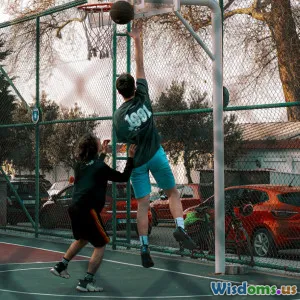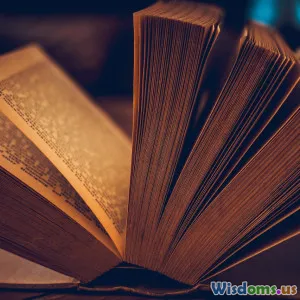
What Happens When Fandoms Collide in MMO Worlds
8 min read Exploring the dynamic interactions and outcomes when passionate fandoms intersect in MMO universes, shaping player experience and virtual culture. (0 Reviews)
What Happens When Fandoms Collide in MMO Worlds
Massively Multiplayer Online (MMO) games are virtual stages where thousands, sometimes millions, of players from diverse backgrounds gather to explore, compete, and socialize. What happens when passionate fans of different franchises, genres, or playstyles intersect within these vast virtual universes? This convergence of fandoms not only reshapes the gaming experience but also stirs complex social dynamics that impact both players and developers alike.
In this article, we dive deep into the fascinating world of fandom collisions in MMOs, unraveling the cultural, social, and gameplay-related effects through illustrative examples and expert insights. Whether you’re a casual player or a community strategist, understanding these impacts can illuminate how digital fandoms influence online ecosystems and offer actionable perspectives on managing or thriving in these vibrant digital spaces.
Fandoms in MMO Worlds: A Quick Primer
Before exploring collisions, it’s important to understand what fandoms mean in the context of MMOs. Fandoms are communities united by a shared passion for a franchise, game mechanics, lore, or even specific playstyles. In MMO contexts, these may form around different games, expansions, role-playing factions, or even cliques that embody unique identities.
Why Do Fandoms Form in MMOs?
- Shared Narrative and Lore: Many MMOs embed rich stories that attract players enamored with certain characters, worlds, or mythos.
- Gameplay Preferences: PVP enthusiasts versus PVE lovers, raiders, or casual explorers all form overlapping but distinct communities.
- Social Bonds: Friend groups, guilds, and clans foster deep social connections, reinforcing fandom loyalty.
These factors cultivate strong group identities, but the real intrigue arises when distinct fandoms meet.
When Worlds Collide: The Impact of Intersecting Fandoms
1. Social Dynamics and Community Culture
The collision of fandoms within MMOs ushers complex social phenomena—from collaboration and alliance building to rivalry and cultural clashes.
Example: WoW’s Cross-Faction Events World of Warcraft (WoW) has historically kept factions like the Horde and Alliance separate, fostering faction rivalry. However, occasional cross-faction events and shared battlegrounds bring these groups into direct contact. Players report experiencing both friendly banter and heated disputes, illustrating how faction loyalties can ignite casual encounters into memorable social exchanges.
Insight: Sociologist Dr. T.L. Taylor notes that “these interactions create emergent social layers where in-game conflict can evolve into broader narratives of identity and belonging” (Taylor, 2018).
2. Creative Collaborations and Mashups
Fandom collisions also foster creativity, where communities combine ideas, roleplaying styles, or aesthetic influences.
Example: Final Fantasy XIV and Star Wars Crossovers Fans of the Final Fantasy series and Star Wars have intertwined fandom cultures within FFXIV roleplay communities, inspired by both games’ lore as they create hybrid characters and themed events. These mashups celebrate diversity and give rise to uniquely enriching experiences.
Fact: Community forums and fan fiction hubs show a 25% increase in crossover storytelling over the past five years, underscoring growing appetite for blended fandom cultures.
3. Gameplay and Competitive Impacts
Fan loyalty frequently influences gameplay priorities—conflicting goals can result in territorial disputes, quest controversies, or hybridized strategy ethos.
Example: EVE Online’s “Cold War” Between Player Coalitions EVE Online is famous for massive player-driven corporate wars. When distinct fandoms or coalitions, each with their own cultural norms and goals, collide, the resulting conflicts can last months or years, significantly shaping the in-game political landscape.
Data: Some periods of heightened conflict have correlated with 40% increases in concurrent player activity, demonstrating intense interest driven by fandom rivalries.
Navigating and Leveraging Fandom Collisions
How Developers Can Manage Collisions
- Facilitating Cross-Faction Events: Regularly introducing events that encourage interaction in structured formats helps minimize toxicity and channel rivalry into fun.
- Supporting Diverse Playstyles: Designing mechanics that cater to varied group goals mitigates clashes and encourages coexistence.
- Community Moderation and Support: Active monitoring and guiding of discussions can prevent harassment when fandoms collide.
Example: Guild Wars 2’s dynamic event system encourages various player groups to participate simultaneously, turning potential competition into cooperative gamified experiences.
Strategies for Players
- Embrace Cultural Exchange: View fandom collisions as opportunities to learn and enrich your experience.
- Avoid Echo Chambers: Engage respectfully with different playstyles and communities to broaden social networks.
- Form Cross-Fandom Bonds: Initiate or join conglomerate guilds or events that celebrate hybrid fandom culture.
Real-World Impact Beyond the Screen
Fandom clashes are not contained within games—they affect player mental health, social identity, and even influence external content creation.
Fan Mental Health Conflicts in fandom spaces can contribute to stress, but supportive diverse communities also provide belonging and resilience.
Content Generation Some of the most innovative fan art, fiction, and videos stem from fandom crossovers sparked in MMOs, illustrating how digital collisions fuel broader creative culture.
Conclusion: Embracing the Chaos and Creativity
When fandoms collide in MMO worlds, the experience is anything but monotonous. We see social conflicts that mirror real-world dynamics, creative fusion that pushes storytelling and role-play boundaries, and competitive fervor that defines new gameplay paradigms.
By understanding these collisions as complex, evolving phenomena, both players and developers can harness their energy to create more inclusive, dynamic, and culturally rich MMO environments. Instead of fearing fandom intersections, embracing them can unlock unprecedented opportunities for engagement, innovation, and community building in the ever-expanding MMO universe.
Ultimately, these collisions remind us that MMOs are not just games—they are living ecosystems shaped by the passions and interactions of their diverse fan communities.
References
- Taylor, T.L. (2018). Watch Me Play: Twitch and the Rise of Game Live Streaming. Princeton University Press.
- EVE Online Annual Player Metrics, CCP Games, 2022.
- Fan Fiction Statistics, Archive of Our Own, 2023.
- GW2 Community Development Reports, ArenaNet, 2021.
Ready to dive deeper into the vibrant world of MMO fandoms? Share your experiences or favorite fandom mashups in your game below!
Rate the Post
User Reviews
Popular Posts


















